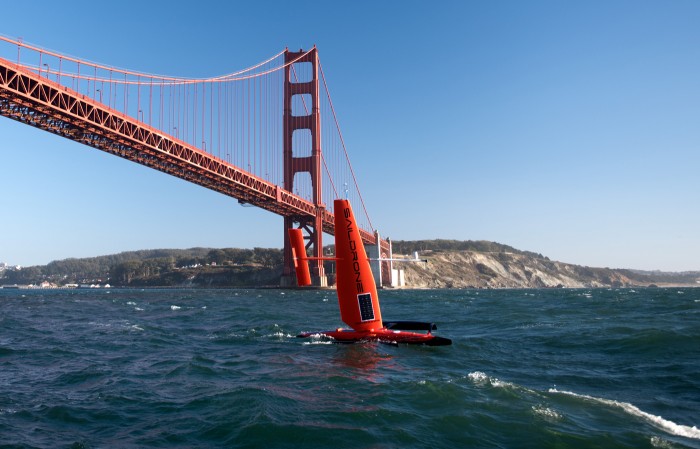Fleets of Robotic Boats Are Getting Ready to Set Sail
While robots are increasingly getting behind the wheel, they’re also quietly taking control of the tiller.
People have been toiling to build small autonomous watercraft for a while now. There have been unmanned submarine vehicles, of course, as well as a few military vessels. More recently, events such as the World Robotic Sailing Championships and the International Robotic Sailing Regatta have seen researchers set small boats, measuring meters in length, sailing across large stretches of water. But these challenges are to sailing as the the DARPA grand challenges were to autonomous driving—they focus on solving cutting-edge research questions rather than deploying practical machines.
Now some companies are getting serious about building self-sailing ships for commercial use. The latest of these is part of a newly announced project taking place in Amsterdam. The $27 million initiative, known as Roboat (of course), will see researchers from MIT, Delft University of Technology, and Wageningen University and Research build a fleet of autonomous canal-going vessels.

While the idea is for these small craft to ferry packages and humans about the city, they could also be used to create on-demand bridges or landing stages, according to the Verge. The first boats are due to take to the water by 2017, though the project is funded for the next five years.
Elsewhere, some companies are eschewing the calm waters of a canal for the open ocean. The New York Times recently took a peek at boats being built by Saildrone in Alameda, California. These miniature trimarans look like shrunken yachts, but they’re not being used to race: instead, they’re being sailed back and forth to monitor fish stocks or gather environmental data.
Meanwhile in Boston, Sea Machines is doing a similar job, building day vessels that it hopes will be able to take over tasks that can be dangerous for humans, like operating tugs. Its software allows prototype boats to independently motor from point-to-point, avoiding obstacles or working with other boats along the way. They’ve recently been testing the craft in Boston Harbor.
There are grander ambitions in the global shipping industry as well. Earlier this year, Rolls-Royce published a vision of a future in which container ships ply their trade without a single crew member aboard. Mikael Makinen, president of Rolls-Royce’s marine division, went so far as to call the idea “as disruptive as the smartphone,” adding that “the smart ship will revolutionize the landscape of ship design and operations.”
He may well be right. As the Economist has pointed out in the past, fully robotic cargo ships could be faster, safer, and ultimately cheaper to run than their crewed counterparts. But their arrival will take some time. Like the first wave of autonomous cars, cargo ships will gain autonomy features, such as navigation and mechanical operations, incrementally. There will be many problems to solve along the way, not least being security—the pirates of the future, after all, could hack an autonomous ship to take control of it.
Until then, it’s smaller autonomous ships—that don’t carry billions of dollars worth of cargo and can be monitored more easily on canals or in harbors—that look set to take to the waters first. Lifejackets are probably still required, for now at least.
(Read more: The Verge, The New York Times, The Economist, Boston Globe, “A Treasure-Hunting Ocean Robot”)
Keep Reading
Most Popular
Large language models can do jaw-dropping things. But nobody knows exactly why.
And that's a problem. Figuring it out is one of the biggest scientific puzzles of our time and a crucial step towards controlling more powerful future models.
The problem with plug-in hybrids? Their drivers.
Plug-in hybrids are often sold as a transition to EVs, but new data from Europe shows we’re still underestimating the emissions they produce.
Google DeepMind’s new generative model makes Super Mario–like games from scratch
Genie learns how to control games by watching hours and hours of video. It could help train next-gen robots too.
How scientists traced a mysterious covid case back to six toilets
When wastewater surveillance turns into a hunt for a single infected individual, the ethics get tricky.
Stay connected
Get the latest updates from
MIT Technology Review
Discover special offers, top stories, upcoming events, and more.